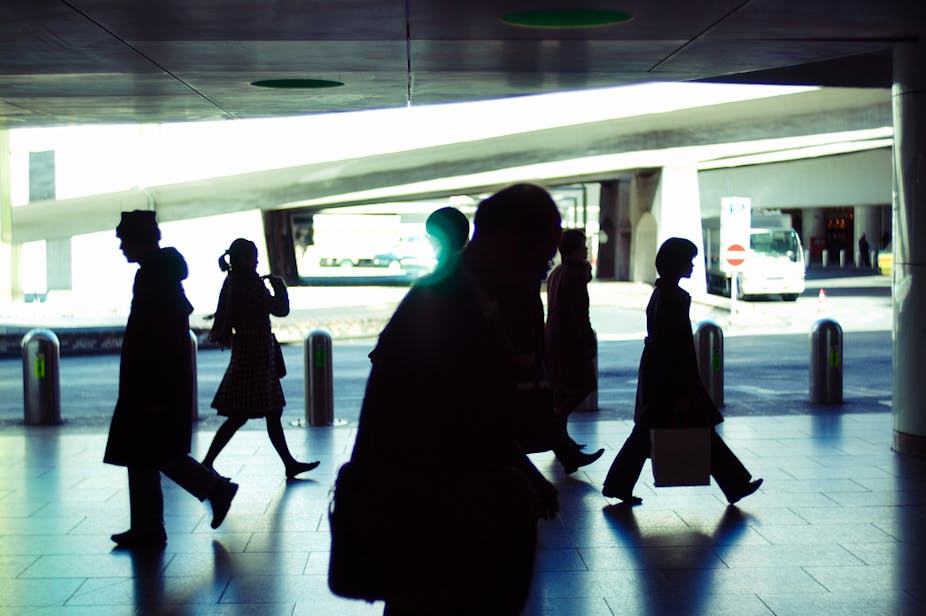Every now and then, and rarely far apart in time, the media features a story about an assault in public where bystanders failed to come to the victim’s aid.
Of course, there are many possible reasons why someone may not intervene in the face of public violence, and different reasons are probably true for different people. The attack may have happened too fast for those who were too far away, and perhaps some of those who were closer were too frightened.
But psychological studies suggest that people are often reluctant to intervene even when they have time to do so, and there’s no risk to themselves.
Kitty Genovese’s murder
The psychological work I have in mind was spurred by a famous case. In 1964, New York woman Kitty Genovese was raped and murdered by a stranger in a residential neighbourhood. The attack lasted about half an hour.
At least some of her neighbours heard Genovese’s screams, yet (at least, if the story as originally reported is true) no one intervened to help. Given the length of the attack, time pressures can’t explain lack of intervention.
Nor was personal safety a factor: at least, it wasn’t a factor that prevented bystanders from calling the police. So why didn’t they intervene?
Work inspired by the Genovese case discovered an interesting and surprising inhibitory effect of groups on helping – people in groups are less likely to help than individuals who are alone.
Oblivious bystanders
In one famous experiment, for instance, subjects were told they were participating in market research. The person conducing the research left them to fill out a questionnaire, while she went to another room.
She was heard to climb onto a chair to get something from a shelf. Immediately afterwards, the subjects heard a crash, and the woman screamed (“Oh my God, my foot…. I…can’t…can’t…get…this thing off…me”). She continued to cry out for about a minute.

The experimenters were interested in whether subjects would come to her aid. About 70% of subjects who were alone came to help, but only 40% of subjects in pairs, when the pairs were strangers to one another.
In a third condition, in which a subject was paired with a confederate who ignored the crash entirely, only 7% of subjects helped.
This is just one of many experiments showing that individuals are more likely to help than people in groups. What then explains this inhibitory effect of the group on helping behaviour?
Whose obligation?
One factor seems to be diffusion of responsibility. No individual feels responsible for helping because no one is better placed than anyone else to help. And because no one feels especially responsible for helping, they don’t feel especially obligated.
Another factor, though, is that the responses of others may guide our interpretation of a situation. In the experiment mentioned above, having a confederate who failed to react had a very powerful inhibitory effect on helping behaviour.
Subjects may have taken the confederate’s impassivity as evidence that the situation didn’t really require help. We are subject to strong conformity effects, and it may often be rational to take other people’s assessments as evidence that ours are wrong.
A third factor, related to this last one, is anticipated embarrassment. What if I go to help another and the aid is neither wanted nor needed? The presence of an audience will heighten my embarrassment, so I am less likely to take what I see as a risk when I’m with others.
Reason to be neighbourly
Some of these factors may help to explain why bystanders don’t go to people’s aid. They may also explain why, in big cities, neighbours are less likely to help one another and we’re more likely to turn a blind eye to suffering.
It’s important to note that the inhibitory effect of groups is greatly reduced if the members of the group know each other well (two friends were just as likely to offer help as a lone subject in the experiment above).
Similarly, knowing the victim greatly increases helping behaviour, as does an expectation that the subject will have to interact with the other members of the group. It’s groups of strangers, which form by chance and then dissipate, that inhibit helping.
So the news from this kind of research is not all bad. It tells us that we’re less likely to help than we might have thought, but also about ways in which we can increase our propensity to offer aid.
Indeed, this kind of research may provide reasons for strengthening communal bonds. In a time when there seem to be many pressures that turn us against each other, it pays to be aware of the potential costs of reducing sympathy.

